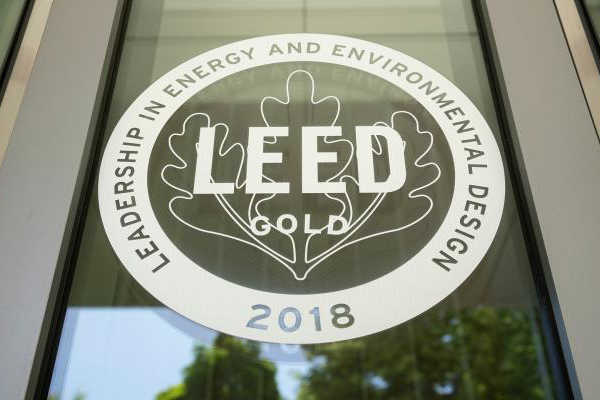LEED Certification is a rating system developed by the U.S. Green Building Council (USGBC) that measures the environmental performance of buildings and their impact on their surroundings. One of the ways that buildings can earn LEED points and achieve certification is by incorporating electric vehicle (EV) charging stations into their design.

EV charging stations provide a convenient and sustainable way for building occupants and visitors to charge their electric vehicles. By installing EV charging stations, buildings can not only reduce their carbon footprint, but also attract and retain environmentally-conscious tenants and visitors.
Including EV charging infrastructure in your project (or adding it to an existing project) will gain you LEED certification points. There are two options for using EV infrastructure to gain a LEED point, and they both have some requirements that must be met.
Option 1: Electric Vehicle Supply Equipment (1 point)
To gain a LEED point with EV charging stations, a project must:
- Install chargers in 5% of the parking spaces (minimum of 2 spaces) and reserve them solely for EVs.
- Provide at least Level 2 charging capabilities for these parking spaces.
- Make sure they use regionally standard EV connectors.
- Meet ENERGY STAR criteria and have features like load management and flexible pricing.
Option 2: Electric Vehicle Ready Infrastructure (1 point)
To gain a LEED point for future EV charging plans, a project must:
- Make 10% of all parking spaces (or at least 6 spaces) EV Ready.
- Include a dedicated electrical circuit with sufficient capacity for each space.
- Include conduits and wiring sufficient to provide Level 2 charging or greater.
- Have an electrical box or enclosure located near each EV charging space.
Incorporating EV charging stations into a building’s design requires careful planning and consideration of factors such as the available power supply, the location and number of charging stations, and the type of charging technology to be used. Buildings that are seeking LEED certification can earn points in the Transportation category by installing EV charging stations, as well as by providing alternative transportation options such as bike storage and car-sharing programs.
In addition to helping buildings achieve LEED certification, EV charging stations also have the potential to reduce air pollution and improve public health. By providing a convenient and reliable way to charge EVs, charging stations can encourage more people to switch to electric vehicles, which produce zero emissions and do not contribute to air pollution.
Overall, the incorporation of EV charging stations into buildings is a win-win situation. Not only do they help buildings achieve LEED certification and reduce their environmental impact, but they also have the potential to reduce air pollution and improve public health. As the demand for electric vehicles continues to grow, the installation of EV charging stations in buildings will likely become increasingly common, and will play a vital role in helping to create a more sustainable and healthy built environment.














